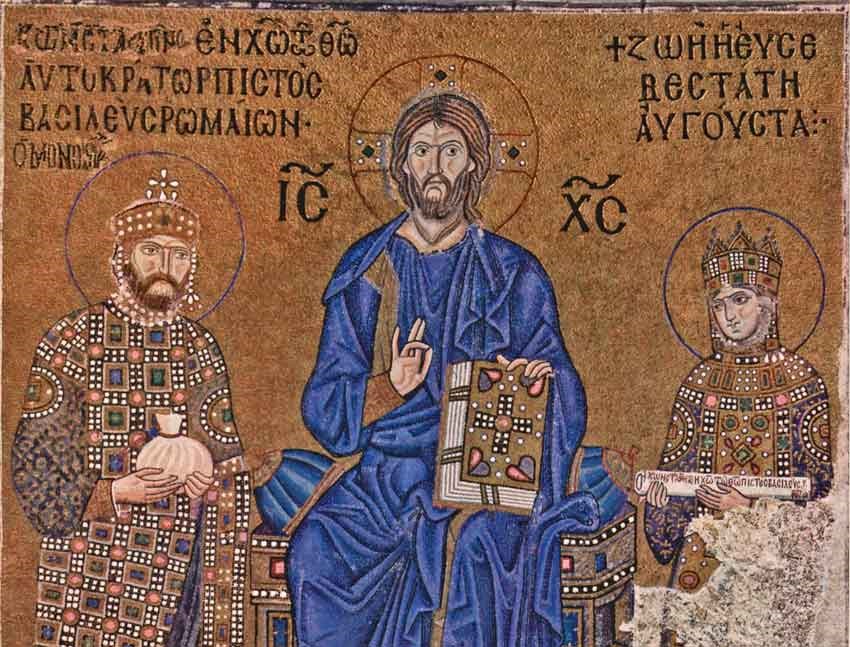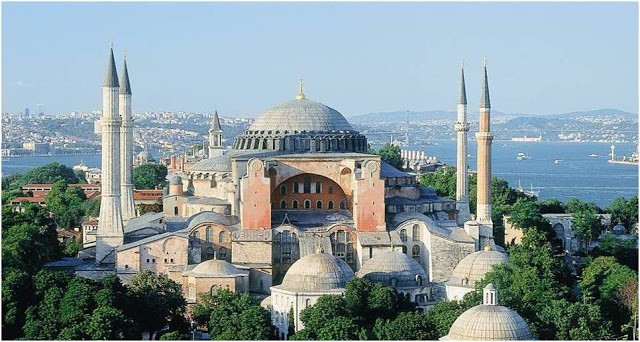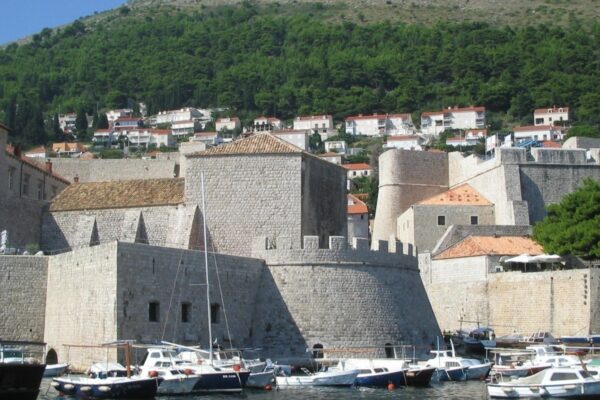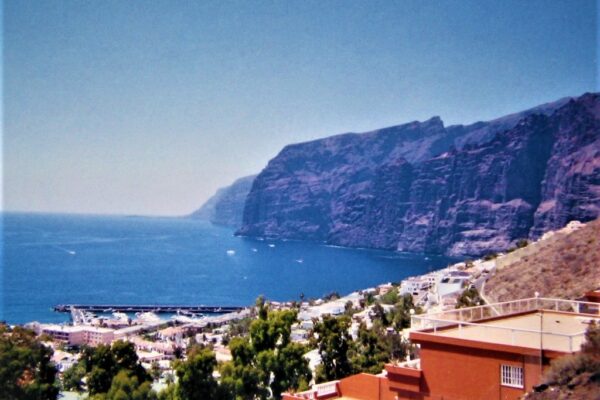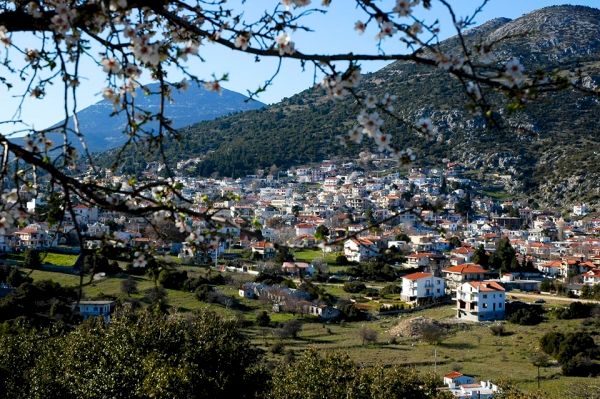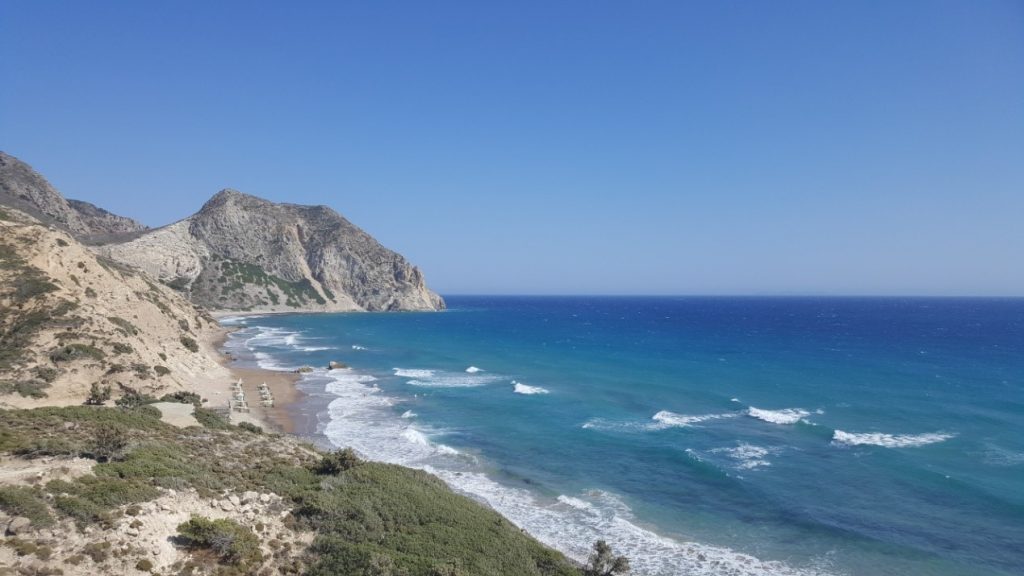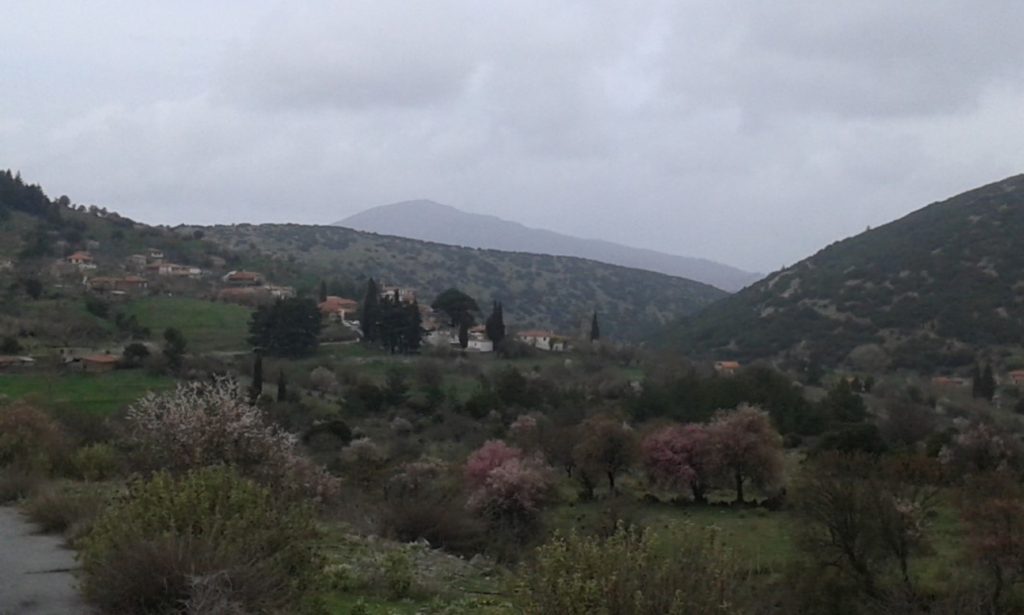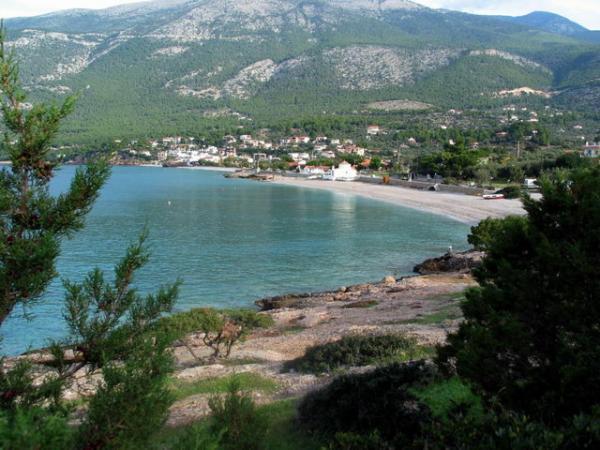Hagia Sophia Istanbul – Hagia Sophia
named "BIG CHURCH"Because it was the largest building built in Turkey, even the Palace. following 5The century. named Hagia Sophia.
HISTORICAL DATA
- 325-360, It began to be built in 1The edifice, initially reign Constantine A.’ and then, after his death(22-5-337) son of Emperor, Constantius, completed work. The 1The building was stone, type basilica, with wooden roof.
- 30 October 360, the inauguration of the temple, with a grand ceremony.
- 20 June 404, (or 9 June 404), the "Great Church" burned down, after religious riots that broke out in Istanbul. Riots these resulted in the dethronement, by Emperor Arcadius, John Chrysostomos, Archbishop Istanbul, because of extreme religious beliefs.
- 408-415, the emperor Theodossios B commissioned the architect Rufino, the reconstruction of the old church in accordance with the original plan, type basilica. The excavations began in 1935 in the grounds of today's Holy Wisdom, They brought to light only the exterior narthex of this church. Excavations quickly stopped for fear of damaging the foundations of Hagia Sophia.
- 8 October 415, inaugurated the restored temple.
- 13 January 532, The new church was burned, during the "Nika Riot», after the people's uprising.
- 532, Forty days after the fire, the emperor Justinian I decided to build, the same position, one magnificent Temple. He wanted to build the largest and most beautiful temple that had been built by then, which even exceeded Temple of Solomon.
architects, Isidore, from Miletus and Anthemios, Tralles (current Aydin) achieved, into 5 years,10 months 4 days, to build a grand and perfect edifice.
- 27 December 537, inaugurated the Church of the Holy Wisdom of God or Saint Sofia's. The emperor Justinian arrived with a carriage triumph, who lead 4 horses. At the entrance greeted Patriarch Minas to enter together in the Temple, from imperial Gate. When Justinian entered the Temple, flooded with pride and emotion, feeling, He stood under the dome and exclaimed :
"Thank God kataxiosanti attached to such a work finally. Nenikika in Solomon» (Glory to God who demanded to realize this project. In defeated Solomon).
- 558, after successive earthquakes (553 AD, 557 AD), the dome collapsed and was completely ruined the Pulpit.
The repairs were entrusted to his nephew 1th architect Isidoros, at Isidore newest.
- 562, Isidore the Younger, delivered the new Dome, highest in 6,25 m. and is one that exists today.
- 24 December 562, under Patriarch Eutychios committed the 2a inaugurated in the presence of the Emperor and the people of Istanbul.
- 869, a small dome falls after earthquakes.
- 870, under Basil Emperor A, They were again repairs to the Temple.
- 986, Emperor under Basil II(976-1025), repaired section of the Dome, which had suffered damage from earthquakes.
- 1204, Franks, who occupied Constantinople, with 4or Crusade, They plundered and destroyed the Temple.
- 1204 -1261, during the Crusades the church was Roman Catholic
- 1261-1282, for Emperor Michael VIII Palaeologus, when Palaiologoi took the town again, Hagia Sophia was re Orthodox Church. Then the church repaired and placed in brackets D.. view of the Temple.
- 1317, on Andronicus B Palaeologos, son of Emperor Michael VIII Palaeologus, the dome is enhanced by supports pyramidal.
- 1344, is again massive earthquake affecting the A. Agia Sophia wing.
- 1346, collapsing the arched wing and A.. small dome.
- 1453, on Sultan Mehmed Conqueror or Mehmet Fatih, after fall of Istanbul (1453), Orthodox Temple converted to Mosque (glass). Added a 'mihrab» (Sanctuary), in A. Sanctuary, oriented towards Mecca, a wooden Minaret, a small dome in D.. Minaret and located in the SE. also known as "Minaret of Mehmet the Conqueror».
- 1481-1512, on Beyazit B was added a thin and small minaret, NE.
- 1520-1566, on Suleiman A of Magnificent, the famous mosaics were covered with plaster, since the display of the human body is considered blasphemy for Islam. Their He added 2 candlesticks, next to "mihrab», who came from Budapest.
- 1566-1574, on Selim B Added 2 large minarets, in D.. where was the architect architect Sinan.
THE architect Sinan He was one of the major principles / rules Turks, born in 1400, He was trained as a military engineer and 1538 He entered the service of Sultan Suleiman A., as imperial authority / image. Built over 477 buildings, Most mosques. Famous work is the Glass Suleymaniye, on Suleiman rejuvenation Magnificent, and the Glass Selimiye. Due to the exceptional talent was chief architect of Sultans Selim, Suleiman A., Selim II and Murad III.
- 1574-1595, on Murad C., the marble Pulpit constructed of "Mouezzin" (preacher) and placed, right and left of the entrance, the 2 marble urns, Hellenistic period, coming from Pergamon
- 1625-1640, on Murad D, the marble Pulpit added, «Mimber"And the marble podium of preacher, A. under the central dome
- 1730-1754, on Mahmud I built a Library, Stan. of Holy, which had 30.000 volumes, a fountain, «fountain», in the courtyard, the Hall Clock and founded the Junior School.
- 1823-1861, on Abdülmecid, were most of the church restoration, the Ottoman domination.
In particular the years 1847-1849, appointed architect Italoelvetos, Gaspare Fossati, where together with his brother Giuseppe undertook the repair and restoration of Hagia Sophia. The brothers Gaspare and Giuseppe Fossati revealed mosaics with frescoes, They repaired them with great care and reinforced with rivets.
Then placed a double iron band in the dome, repaired columns and minarets strengthened. The Gallery Sultan, a raised gazebo which was used to praying the sultan and has without seeing him, It is work Gaspare Fossati.
The artist, Izzet Efendi created the Arabic inscriptions of the walls (diameter 7,5 m.) we see hanging on the walls. The artist himself wrote verses of the Koran, located in the central dome.
- 24 October 1934, on Mustafa Kemal Atatürk, Hagia Sophia Museum is – HAGIA SOPHIA MUZESI.
AGIA SOFIA, The MEGALOPREPIS TEMPLE
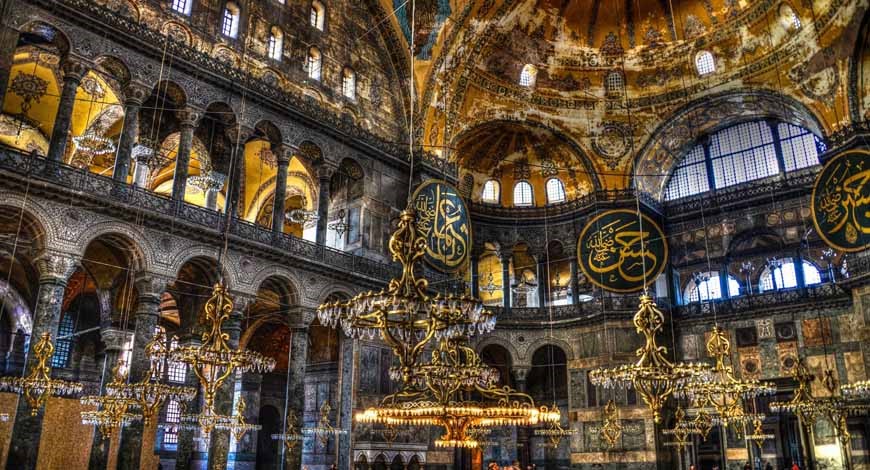
Located in SW. side of the first hill of the City, towards SE. The decor covering the inside of the church was on a par with its architecture. About 10.000 workers were employed to build the Temple. For columns, capitals and wall claddings best marbles used, from all parts of the world.
For the dome, arches and walls used bricks. Tall columns of purple, white and greenish mottled marble, framed with marble capitals were decorated with lines of color blue or gold. The walls were covered with colorful marbles, painted by most skillful artists, and mosaics which glittered in the deep blue or silver background. The ceilings were adorned with decorative rosettes, mosaics and crosses of colored glass and striking stones.
The altar was made of pure gold, adorned with rare jewels and enamel, while the sanctuary was decorated with silk and gold embroidery. There was a huge chandelier with thousands of candles lit the Magnificent Temple.
THE CHURCH OF SAINT SOFIA TODAY
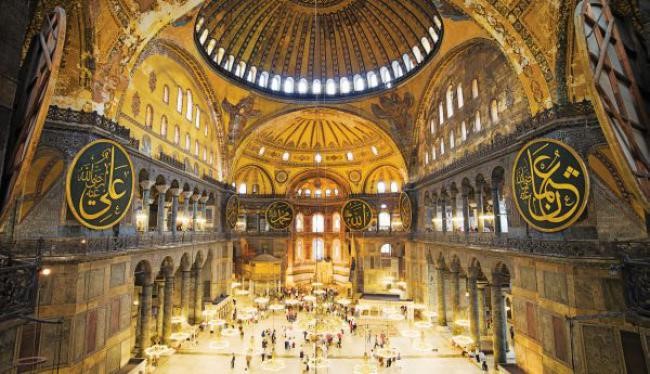
The Hagia Sophia belongs to type rectangular basilica with dome circumcenter. Inside the church is divided into 3 aisles, two rows of colonnades dependent their pillars. The nave is twice the width of the two side.
Specifically, the Temple has the following dimensions:
- 78,16 m. is the length of the temple, from the Imperial Gate to the apse.
- 71,82 m. It is the maximum width, by B. to N.
- 55,60 m. is the height from the floor to the center of the dome.
- 33 or 31 m. It is the diameter of the dome
- 13,80 m. It is the height of the dome, from its base to the top.
The Church surface, namely the Temple, the splint and is exonarthex 7.570 sq.m. and is the 4or largest in the world.
The Hagia Sophia today will see the following:
- Terrace, the main facade of the building. It was a courtyard with arched columns and 9 gates, of which still stand today 5 and are input to exonarthex. The rest was covered by bricks.
In the center of the courtyard there was a marble tank, «bottle», from which water falling from the mouth marble lions. On the outer side there is an inscription that read :«WASH YOUR SINS, NOT ONLY YOUR FACE"Or"Wash your sins, not only your face», ie here rinsed your sins not only your face, which could be read and vice versa (cancerous). Today the label is not preserved.
Atrium, the old sanctuary Baptistery of St. Sophia, It was converted to Mausoleion sultans Ottoman. specifically there 4 mausoleums, the sons of Murad III, Murat C., Selim B and Mahmud C..
- exonarthex, he's got 5 entrances leading to the narthex
- Splints, dimensions 11×60 m. where communication with the interior of the church was through 9 inputs-gates (3 per aisle). The highest of the gates was the "Royal or Imperial Gate" Those who were sinners were forbidden to enter the narthex
- Imperial or Royal Gate, the most important gate from which they entered the emperors. The frame of the input that was made of metal alloy, the "amber". The Arch, that exists above this entry, It has a tactile image holy Throne and Scriptural. The Bible is open and one can read the following in John, Gospel "The Lord said, I am the door of the sheep, diemou if the Login, is saved and entry and exit and ye shall find nomin». Above the throne is the image of a dove, symbolizing the Holy Spirit, Throne symbolizes the Father, and the Bible, the Son.
- Main entrance Temple. The door constructed in 838, from solid oak, with brass dividers and netting braided Greek decorations
- Theodosian Church Ruins, A. the main entrance
- alabaster Containers (either side of the Imperial Gate)
- «Efidri Column " or "Column of St. Gregory ", in Byzantine or "Column of tears ", (A. the temple). Left of the Imperial Gate, the temple is a hole with a copper plating. According to legend if you put your finger in the hole, make a wish, the turn out and wet, then the wish will come true.
- Dome or Dome (centre), The skeleton consists of 40 streaking, made of bricks. Is based on 4 arches (bows), which are based in turn on 4 massive pillars (square support columns), apart 30 m. The 4 pillars also called "elephant legs". The dome gives the impression that floats because of 40 windows situated around the base of, the "drum", between ridges.
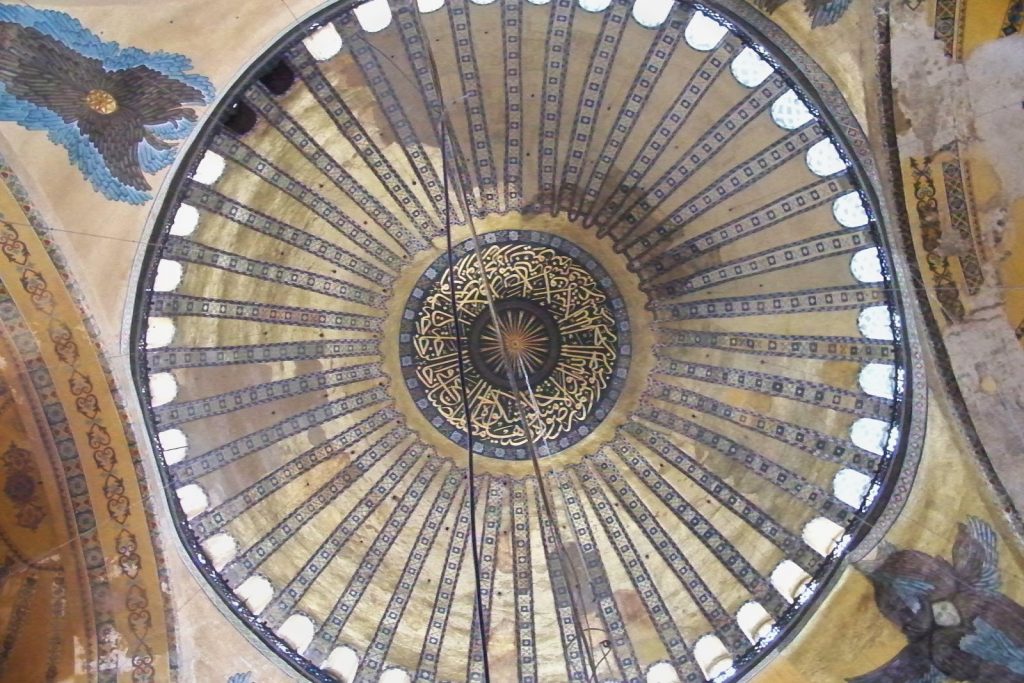
The contemporary historian Procopius tells the dome: «…It gives the impression that it is a piece of heaven on earth hanging…».
- Library Mahmud A., in D.. Temple
- Navel, in N. portion of the central aisle is saved in the floor, colored brick. There was the coronation of the Emperors and considered the center of the world.
- semi-vault, located after the dome.
- Gallery Sultan, in A. Temple.
- Mimber and mihrab, the sanctuary.
- Tombstone marble slab (1205), the floor of Henrico Dandolo, doge of Venice, commander of 4th Crusade that conquered Constantinople. Within a sarcophagus found the armor Dandolo, which was given by Mehmed the Conqueror, the artist who had painted his portrait, Gentile Bellini
- Gallery or zenana, building used for women.
THE MOSAIC OF HOLY WISDOM
The 1932 the Turkish state in collaboration with the American Institute of Byzantine Studies began cleaning and restoration of the mosaics of the church, under the supervision of Thomas Whittemore. The restoration of the impressive mosaics over the 1940. The mosaics of Hagia Sophia, depicting scenes with Saints completely destroyed during the Iconoclasm (726-842).
The art of the mosaic was the following : stuck onto glass gold leaf tesserae. From above, for protection from the time they passed one minutes varnish layer. Finally each chip placed upside down so that the gold can be seen in the glass depth.
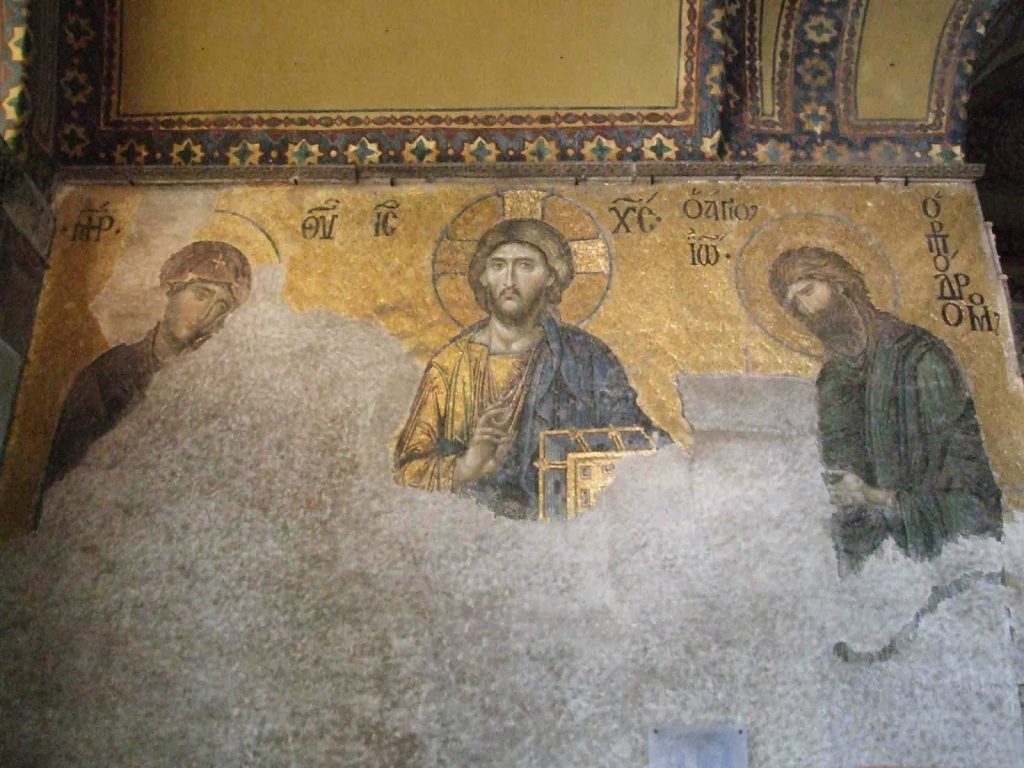
- Mosaic of the Deesis (13th ), the gallery (zenana) Temple. The representation illustrates Christ waist, Notre left and right John the Baptist.
- Mosaic Virgin and Child Enthroned (9th c.) in the center of D. semi-domes of the Temple.
- Mosaic enthroned Christ and Emperor Leo VI(10th or 11th ).
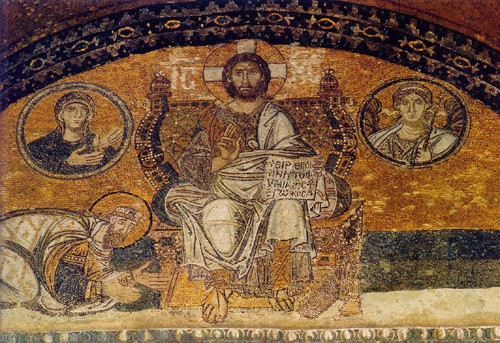
Located inside a vault, the drum of the arc of the Imperial Gate, the narthex. It shows Christ on a throne blessing with his right hand and his left holding the Gospel open, with the phrase "peace be with you. I am the light of the world». At his feet is the kneeling Emperor Leo VI the Wise and circled the Virgin Mary and Archangel Michael, on either side of Christ.
- Mosaic Virgin and Child Enthroned
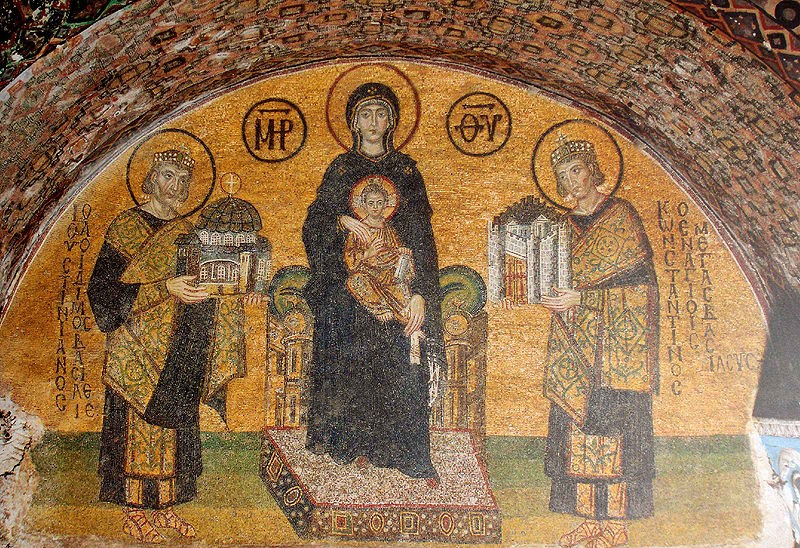
Located above the inner gate, now used as a main entrance to the Temple. Represents the Virgin with Christ on the throne, Right Emperor Justinian, who offers her, a dummy and left the Temple, Emperor Constantine, who offer to the Virgin a model of the City.
- Mosaic Virgin and Child and Emperor Komninos B(of 12th c.)
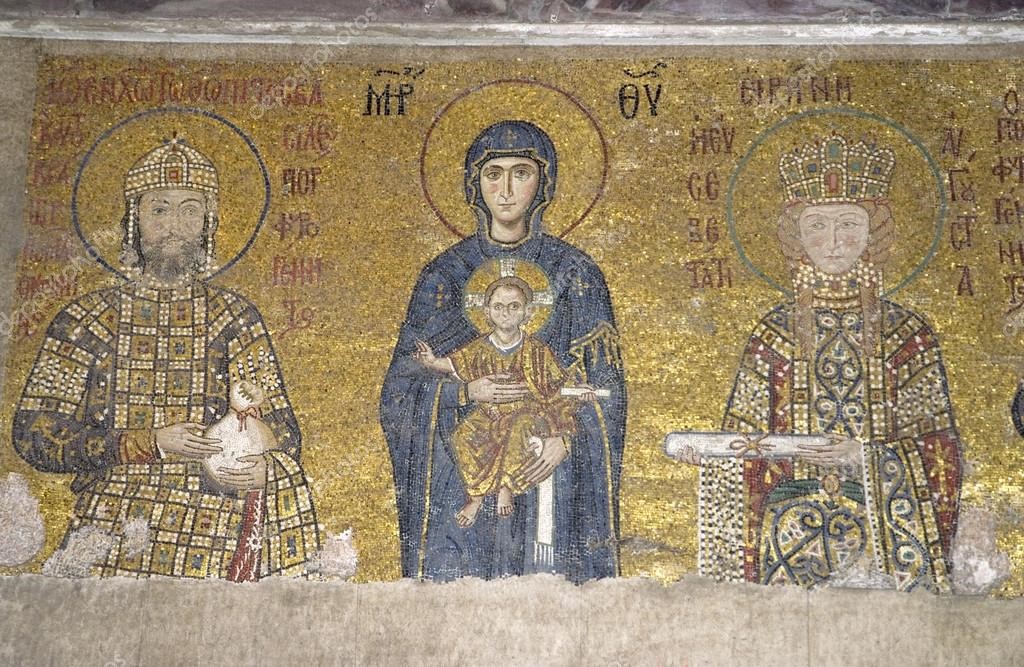
Located in gallery (women's) Temple and depicts the Virgin Mary with Christ, baby in her arms, She left is Emperor Ioannis Komninos B and the right of, the emperor's wife, Peace Hungary
- Mosaic of Christ and the Empress Zoe, the Porphyrogenitus (11th), in N. part of the gallery. In the representation Christ is seated, Bless the left and right holding a closed Gospel. Left is the Emperor Constantine I., Gladiator and right Empress Zoe.
